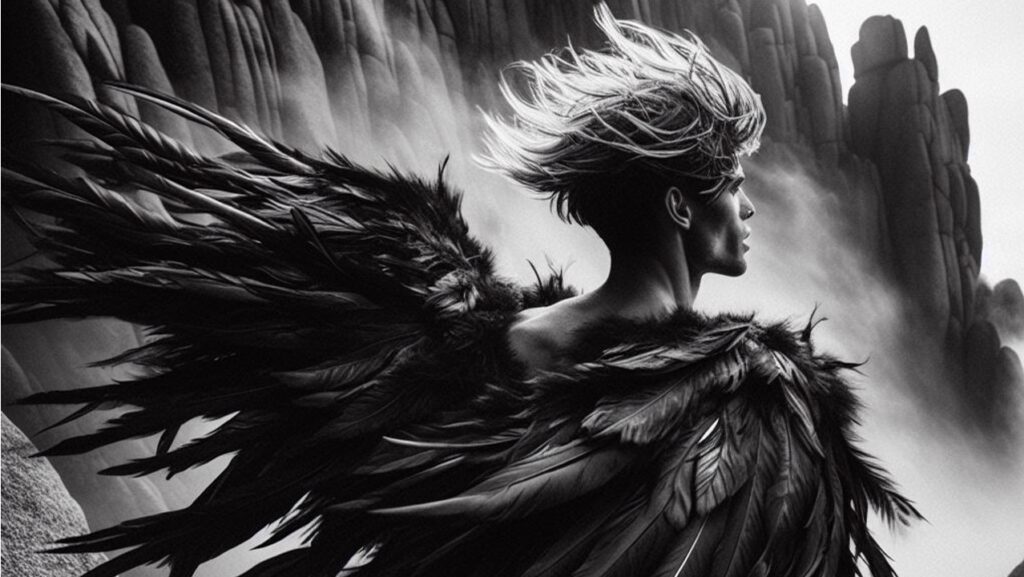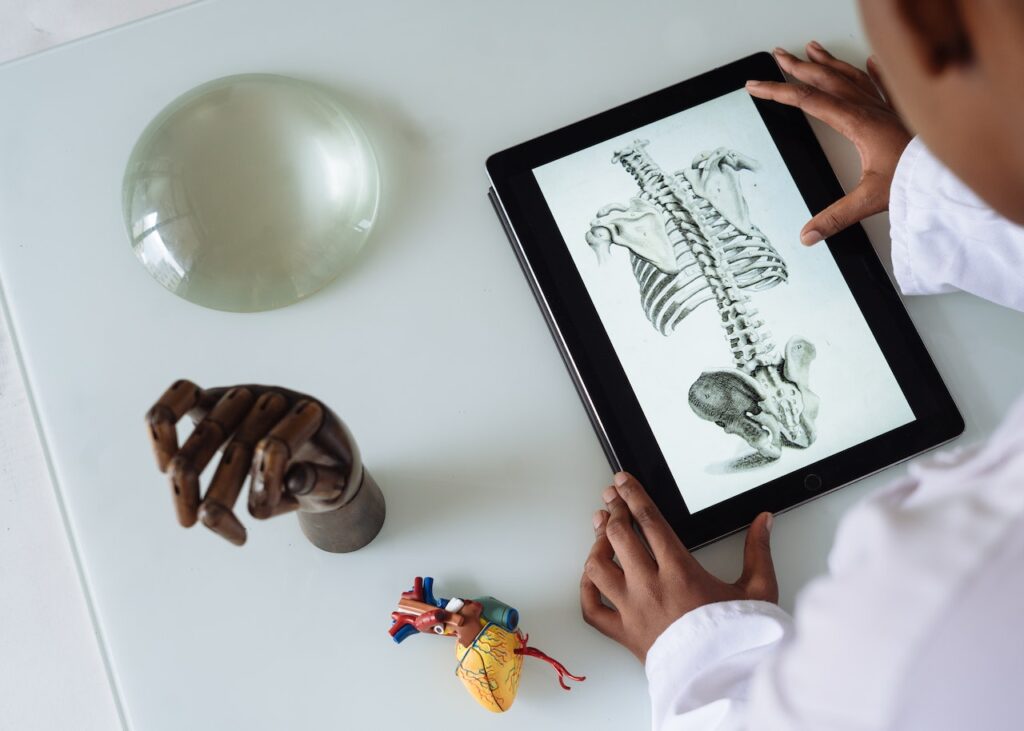
If humans had wings, the world would certainly be a very different place. The ability to fly would change the way we travel, hunt, and interact with each other and with our environment.
While it may seem like a fantastical idea, humans have been wondering about this possibility for centuries.
One of the first recorded attempts to fly like a bird was made by Leonardo da Vinci in the 15th century. He designed a set of wings based on the anatomy of birds, but it was never successfully tested.
Since then, many others have attempted to create flying machines that mimic the movement and structure of wings.
However, the idea of humans growing wings like birds is purely fictional. Despite this, it’s still an interesting topic to explore and imagine what could be possible if humans had wings.
So, let’s start with the obvious question: If humans had wings, what would their wingspan be?
Related:
How Big Would Wingspan Need to Be for Humans to Fly?

To answer this question, we need to understand the concept of wing loading. Wing loading is the amount of weight that a wing can support per unit of area/mass.
Generally, birds have a low wing loading, which means they have larger wings relative to their body weight. On the other hand, airplanes (especially big airliners) have a high wing loading, which means they have smaller wings relative to their weight.
Assuming humans could fly with wings, they would probably need a low wing loading to be able to lift off the ground.
Based on different calculations, the ideal wing loading for a human to fly would be around 3-4 kg/m². This means that for a person weighing 70 kg, their wingspan would need to be around 6-7 meters.
However, this is just an estimate. Other factors such as muscle strength, bone density, and wing shape would also affect the required wingspan. Moreover, flying with wings would require a lot of energy, so humans would need to consume a lot of food to sustain flight.
Additionally, we could use as an example one of the largest flying birds to ever exist – The Argentavis Magnificens.
This bird is very comparable to humans because of its weight. Namely, the bird weighed 70 to 72 kg (154 to 159 lb) and had a wingspan of 7-8 meters (23-26 feet).
That’s astonishing!
And yes, this bird could fly.
Okay, so now that we have a rough estimate of the wing size, let’s explore more.
Interesting fact: Some humans, in reality, have undergone rather extreme surgeries to achieve something akin to wings. Specifically, Justin Jedlica, better known as the Human Ken Doll, underwent surgery with an implant inserted into his spine to create the illusion of wings.
Anatomical Changes in Humans with Wings

Skeletal Structure
If humans had wings, the skeletal structure would have to undergo significant changes to support the added weight and stress of flight. The bones in the arms and hands would elongate and become thinner, while the shoulder blades would become larger and more flexible to accommodate the wings. The ribcage would also need to expand to allow for larger lungs to support the increased oxygen demand during flight.
Muscle Development
With the addition of wings, people would require stronger and more developed muscles in their arms, shoulders, and chest to power the flapping motion necessary for flight. The pectoral muscles, in particular, would need to be much larger and stronger to support the weight of the wings and the body during flight.
Feather Integration
Feathers would need to be integrated into the human body to create the necessary lift and aerodynamics required for flight. The feathers would need to be attached to the arms and hands, with smaller feathers covering the body to reduce drag. Additionally, humans would need to develop specialized oil glands (uropygial gland) to keep feathers waterproof and in good condition.
Overall, the anatomical changes required for humans to have wings would be significant and complex.
However anatomical changes would not be the only change humans would experience in this thought experiment scenario.
Namely, people with wings would need to undergo significant numbers of physiological adaptations.
Physiological Adaptations

Metabolic Rate
If humans had wings, their metabolic rate would increase significantly due to the additional energy required for flight. The wings would require a substantial amount of muscle mass to move and control, leading to an increase in basal metabolic rate. The body would need to adapt to this increased energy demand by developing more efficient metabolic pathways.
Respiratory Efficiency
To support the increased metabolic rate, humans with wings would need to develop more efficient respiratory systems. They would require larger lung capacity and more efficient gas exchange to provide the necessary oxygen to the muscles during flight. The respiratory system would need to be able to handle the increased demands of flight without causing fatigue or shortness of breath.
Circulatory Adjustments
The circulatory system would also need to adapt to the increased demands of flight. The heart would need to pump more blood at a faster rate to supply oxygen and nutrients to the muscles during flight. The blood vessels would need to be more flexible to accommodate the changes in pressure and flow that occur during flight. Additionally, the body would need to develop a system of valves to prevent blood from flowing back into the heart during flight.
And so, this leads us to the overall changes in society if humans had wings. Namely, in the wing-world, the whole society would look completely different.
Human Society and Culture

Architecture and Infrastructure
If humans had wings, the architecture of buildings and infrastructure would be drastically different. Buildings would be designed with larger entrances and exits to accommodate wings. Staircases and elevators would probably still be present, but they would be complemented by ramps or other means of ascending and descending that would be accessible to winged humans.
Additionally, buildings would be designed with larger spaces to allow for wing movement, and outdoor spaces would have designated areas for takeoff and landing.
Fashion and Apparel

Fashion and apparel would also be impacted by the addition of wings to human anatomy. Clothing would need to be designed with slits or holes to allow for wing movement. Additionally, clothing would need to be lightweight and breathable to avoid weighing down the wearer. Fashion would also be influenced by the aesthetics of wings, with patterns and designs being inspired by feathers and flight.
Sports and Recreation
The addition of wings to humans would open up a whole new types of sports and recreation. Humans could participate in aerial sports such as gliding, skydiving, and aerial acrobatics. Additionally, traditional sports such as basketball and soccer could be modified to allow for winged players. The inclusion of wings would certainly also lead to the creation of new sports and games, designed specifically for winged humans.
And, yes we know that all of this sounds rather funny and perhaps ridiculous, but remember this is just a thought experiment.
Therefore let’s shift into even higher gear and think about potential changes in love life in a world with winged humans.
Love Life and Avian Humanoids

Firstly, the very nature of romantic gestures would completely transform. Picture couples flying through the skies, hand in hand, experiencing the beauty of a sunset from a vantage point that was once exclusive only to birds.
As today (in airplanes), people would try to make love in the skies in many different ways. Some people would get hurt doing this air gymnastics, but people are curious beings and certainly, they would try every possible pose in the skies.
Additionally, the concept of long-distance relationships would take on a whole new dimension. No longer confined by earthly barriers, lovers separated by great distances could easily meet somewhere in the sky.
The phrase “love knows no bounds” would take on a literal meaning as humans, equipped with wings.
Furthermore, the dating landscape would evolve with the introduction of aerial dating spots and floating platforms where couples could meet.
Imagine speed dating among the stars or picnics on clouds. The question of “where to go on a date” would take on a whole new level of creativity and adventure.
On a more practical note, commuting and travel for couples would become an exciting experience. No more boring hours spent in traffic or long flights; instead, partners could easily fly to their desired destinations.
However, like in any fantastical and theoretical scenario, there would be challenges. Issues of air traffic control, air red districts, aerial etiquette, and safety precautions would become key in figuring out policies for couples (and other people) in the air.
One thing is certain – if people had wings they would have much more fun in their lives.
Conclusion

In conclusion, if humans had wings, it would greatly impact the way we live our lives. Everything would change, from the muscles in our bodies to our lungs and metabolism. Societal structures would also undergo a complete transformation. Love life would change, enabling new ways of dating and meeting our partners.
Furthermore, the architecture of buildings and every living area would need to change from the ground up. Rooms would look different, and entrances to buildings would have a distinct appearance.
Not to mention clothing and fashion – this aspect of our lives would change in many ways to accommodate various wing styles.
So, this is a rather interesting and fun thought experiment.
While currently people cannot have wings and cannot fly, this is a topic that has interested humans for centuries. Many mythological humanoids are depicted with wings.
And of course, this scenario is currently in the land of speculative fiction, but perhaps one day it will become a reality for humans in the future.
With advanced surgeries and genetic modifications, people may gain the ability to have wings.
Perhaps it will happen in 2100, a thousand years from now, a million years from now, or never, we can not know.
Nevertheless, it is always fascinating to speculate about such possibilities.



























